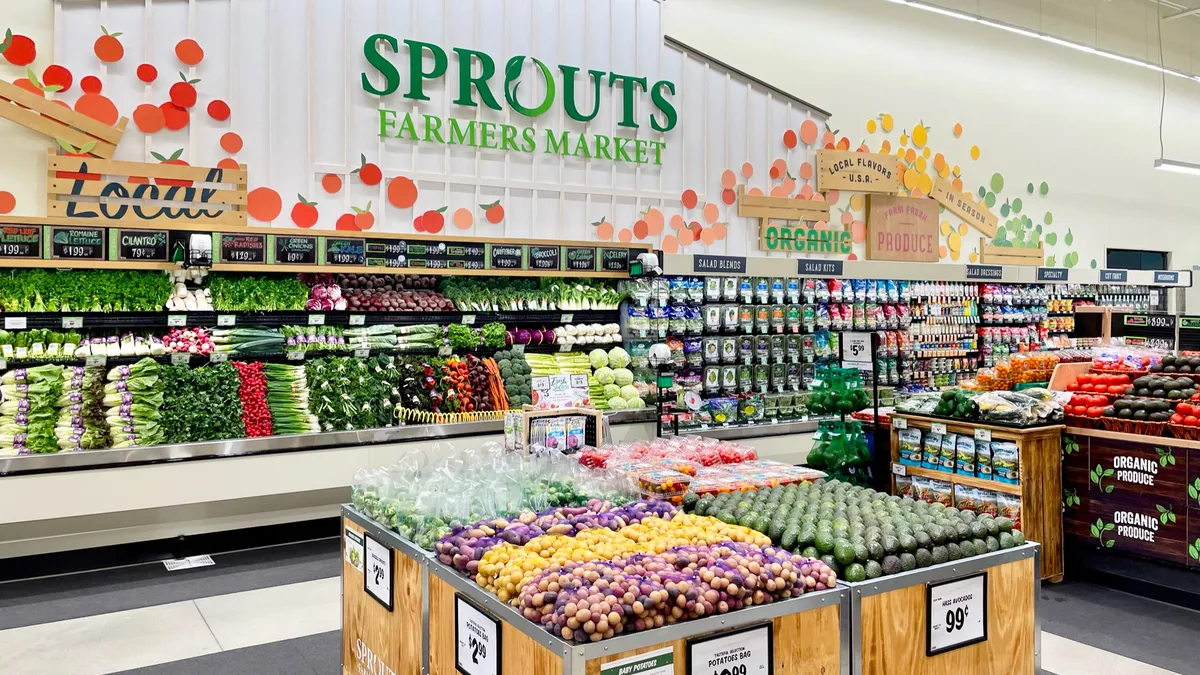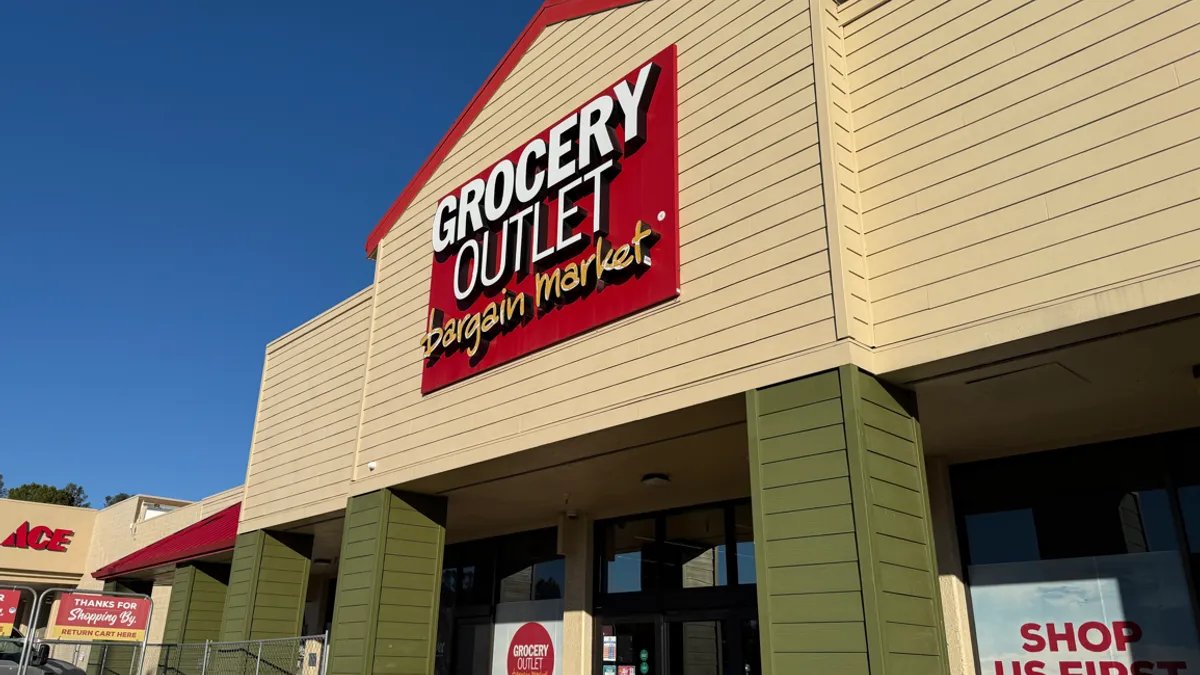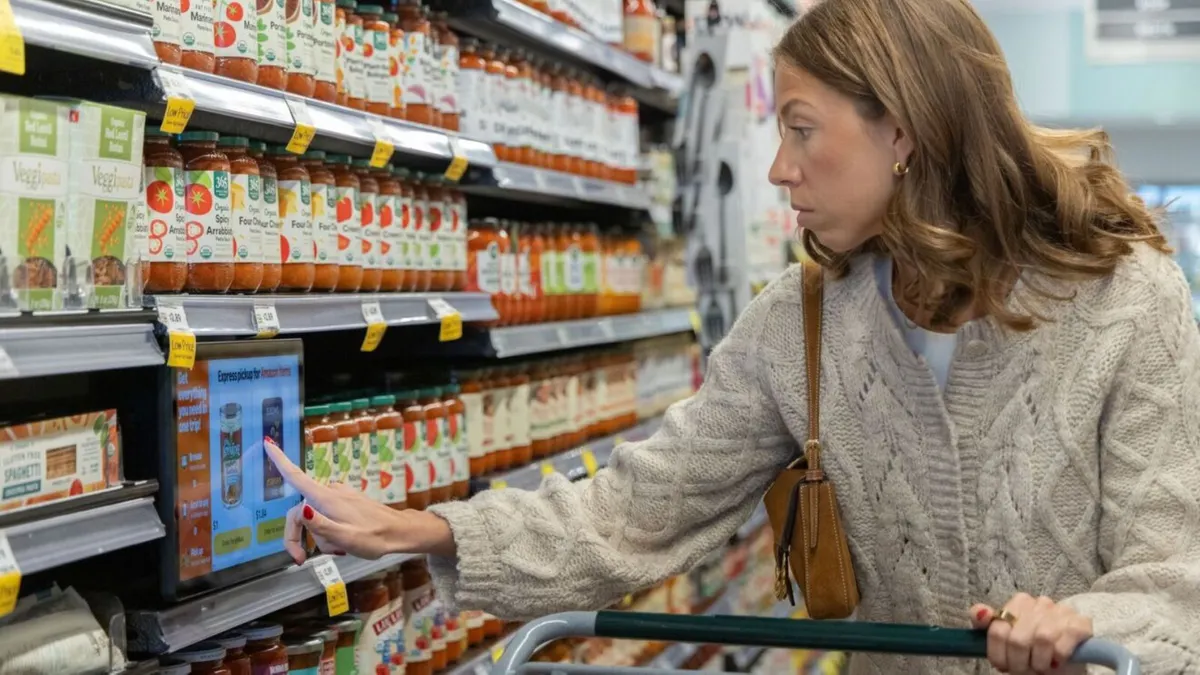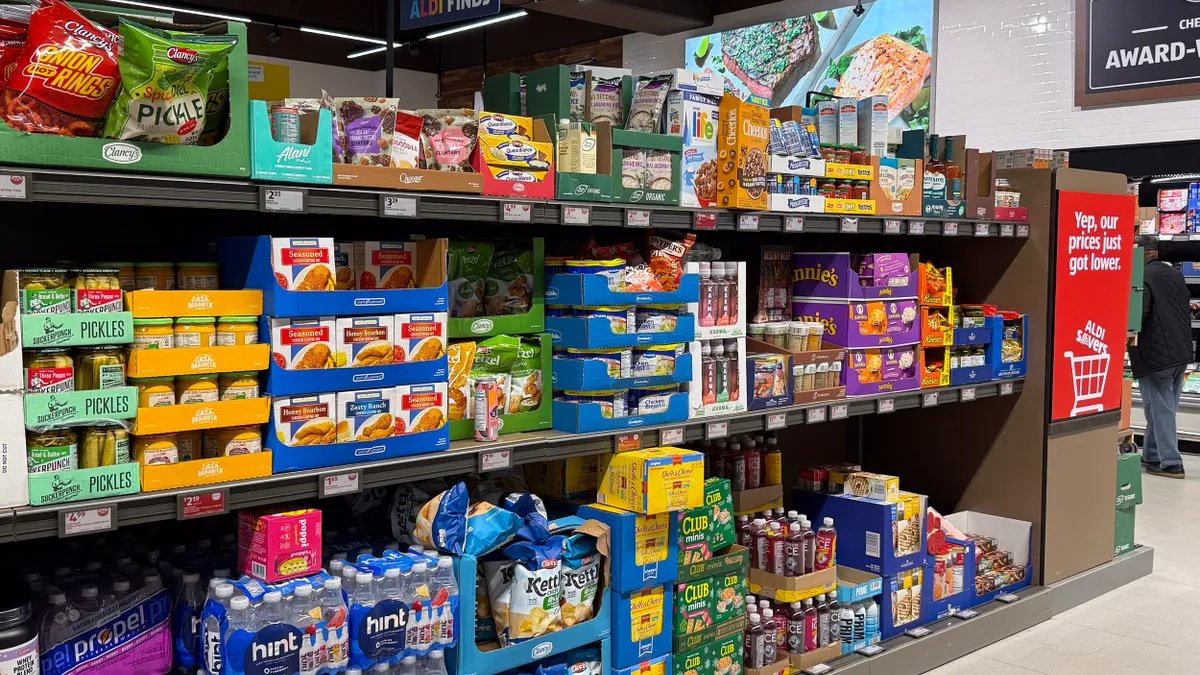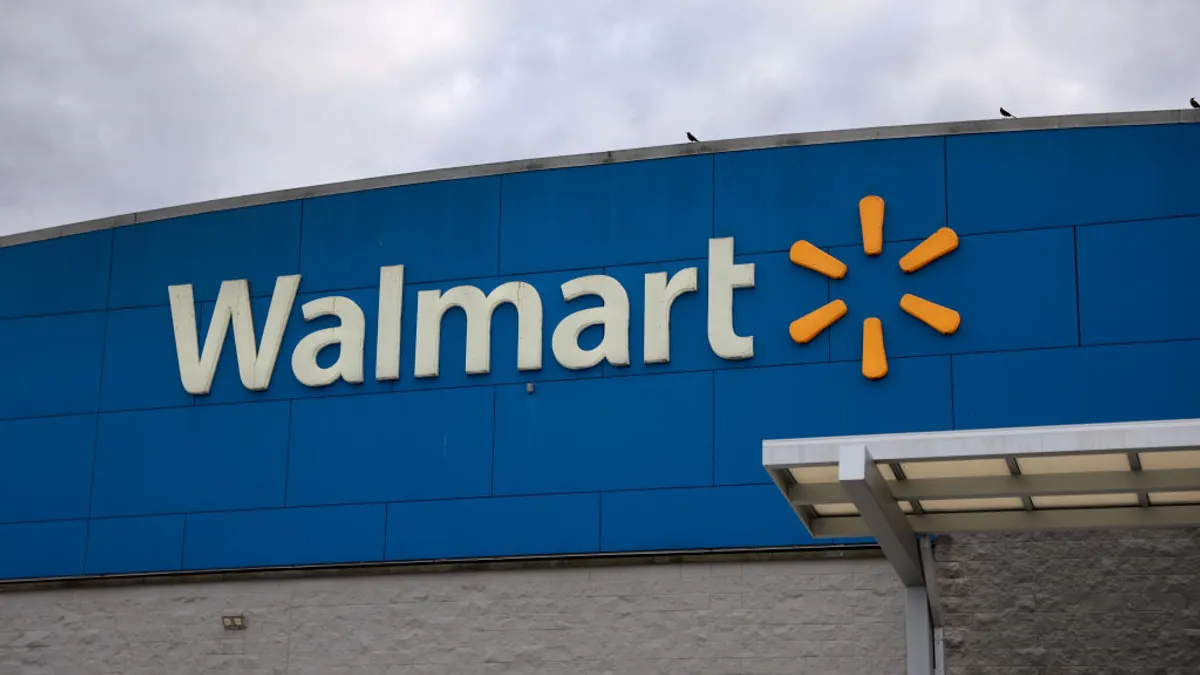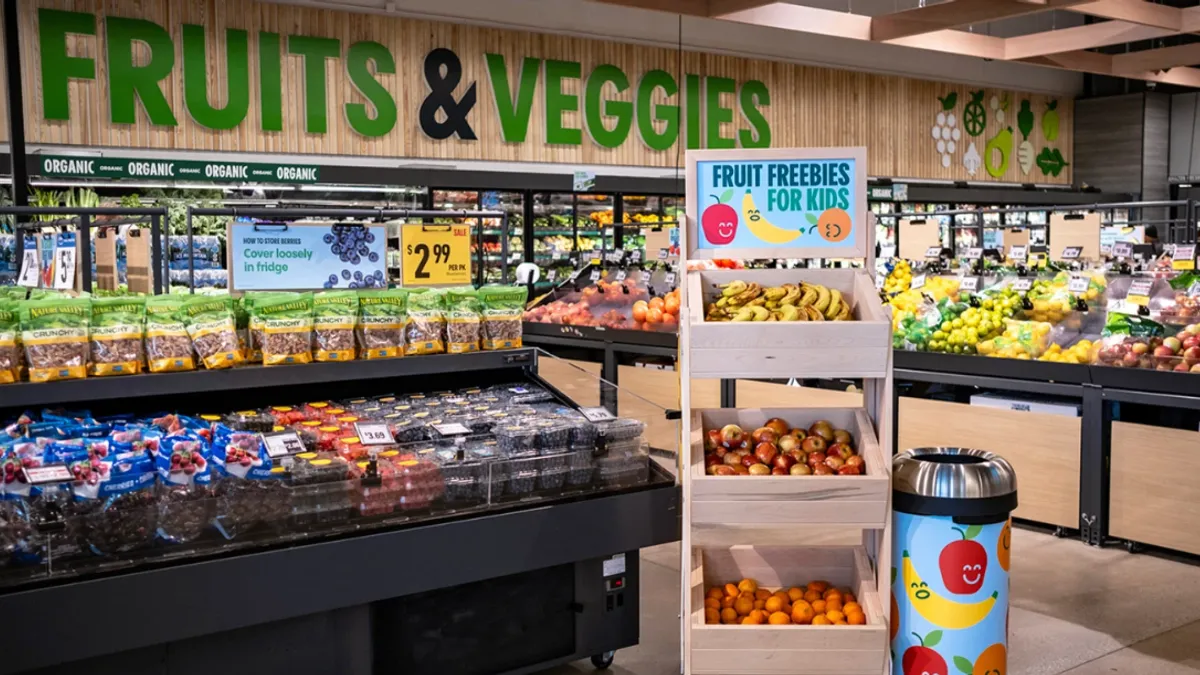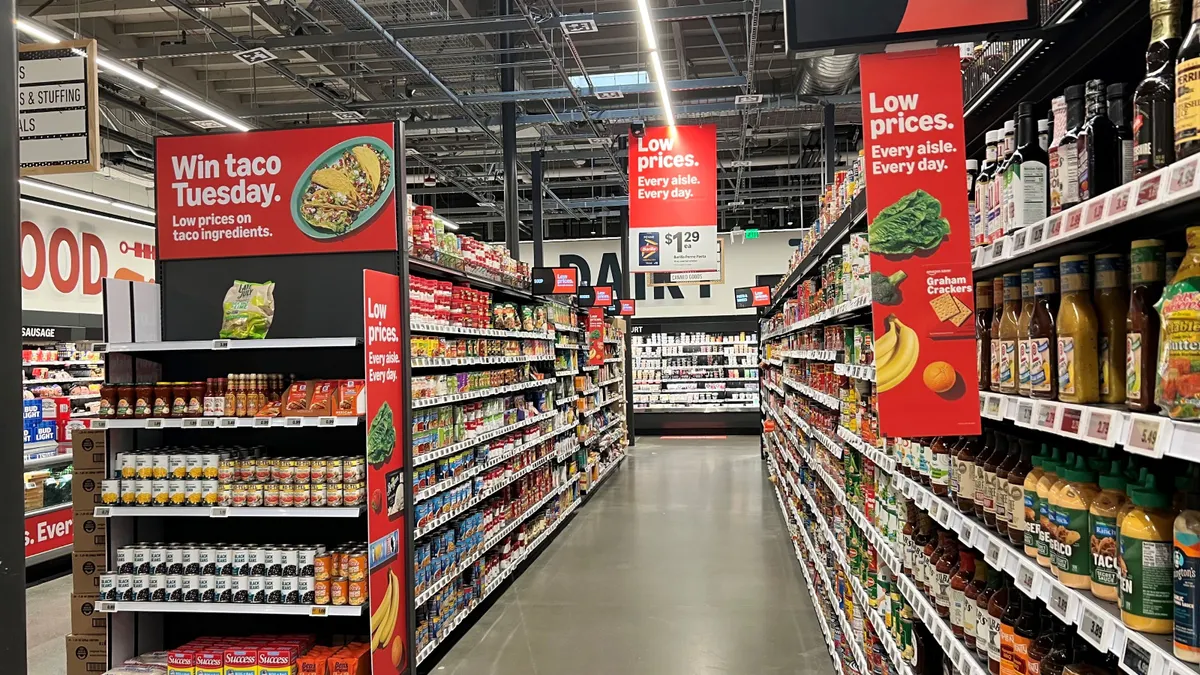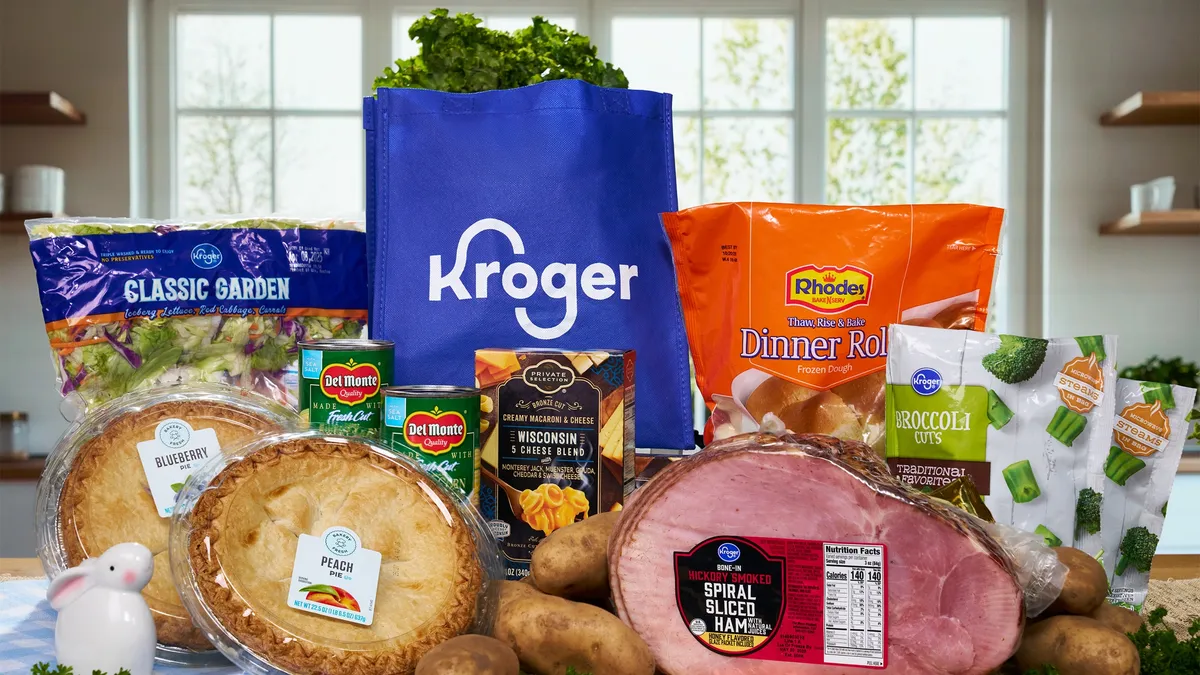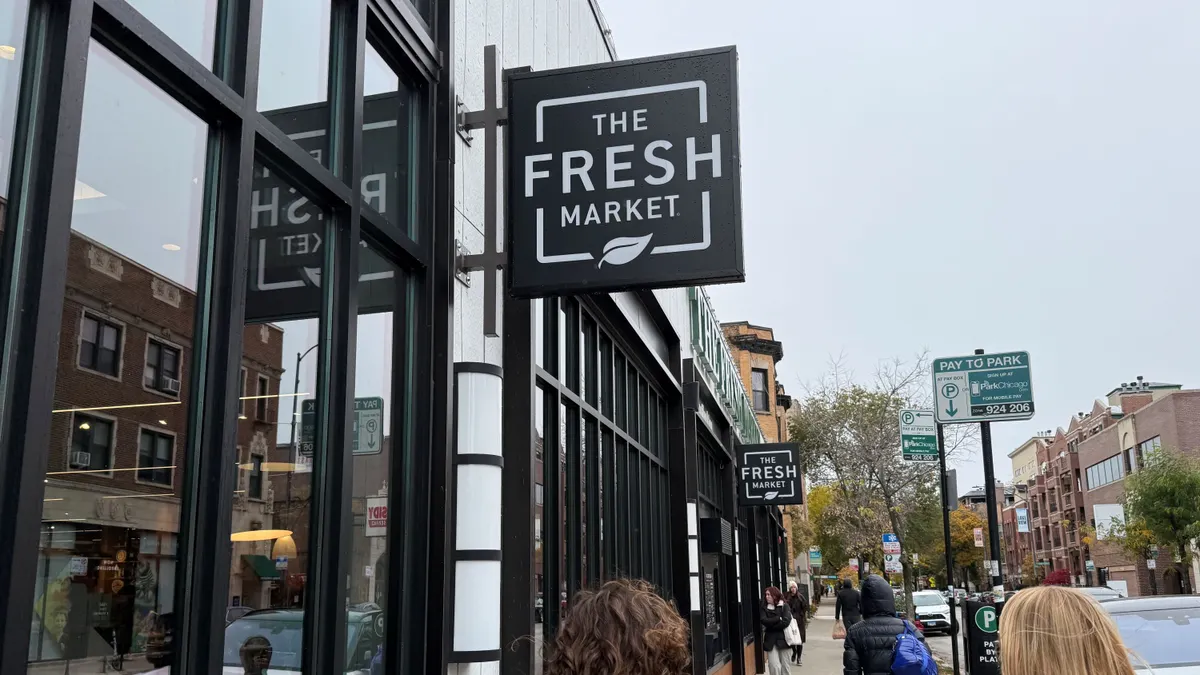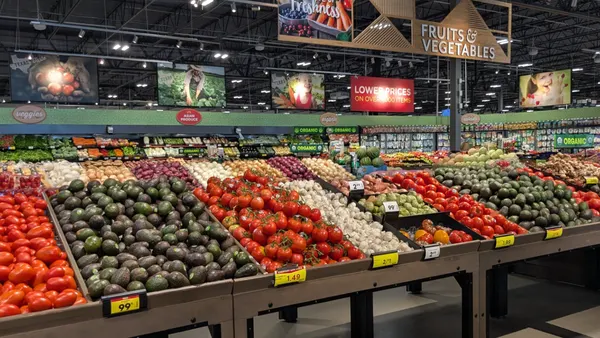Number Sense is a regular column that uses data to help understand the grocery landscape.
When you take a 30,000-foot view of the recent financial performance of the nation’s grocers, Sprouts Farmers Market is something of an enigma.
As other publicly traded food retailers have posted anemic or even negative comparable-store sales growth during the last few quarters, Sprouts’ comps have shot up. Similarly, while supermarket operators such as Kroger, Albertsons and Ahold Delhaize have delivered lackluster returns for Wall Street investors over the past five years, shares in Sprouts are up by more than 700% during that period.
Sprouts’ latest quarterly results, released Thursday, underscore the specialty grocer’s success. The retailer turned in comparable-store sales growth of 11.5%, while net sales climbed 18% compared with the fourth fiscal quarter of 2023. And although the company’s shares took a huge tumble on Friday — a day when the stock market sank amid concern that the economy could be heading into unsettled waters — Sprouts’ stock price is still more than double where it was a year ago.
Sprouts’ same-store sales are shining
While the disparity between Sprouts’ comps and stock price performances and those of other grocers might be a mystery to the untrained eye, the reasons for Sprouts’ standout results aren’t hard to decipher when you look a little more closely.
The produce-focused specialty grocer has delivered on its goal of turning its stores into essential destinations for health-focused shoppers who are not as price-conscious as consumers who depend more heavily on traditional supermarkets.
In addition, Sprouts has had success in pivoting toward smaller-format locations that are less expensive to build and run while also delivering higher margins. Those less-expansive stores occupy about 23,000 square feet compared with the chain’s legacy locations, which span around 30,000 square feet. Sprouts achieved much of the square footage reduction in its updated store design by eliminating backroom space, a decision that left center store departments the same size, according to the company.
Sprouts’ average store size has decreased steadily in recent years, to under 28,000 square feet in fiscal year 2023, according to data Coresight Research published last week. Meanwhile, Sprouts has also expanded its store count briskly, adding 33 new locations last year, and finished 2024 with 440 stores in 24 states.
As John Clear, senior director in the consumer and retail group at consulting firm Alvarez & Marsal, told me recently, Sprouts has benefited from staying true to its mission of serving a specific group of shoppers and steering clear of the temptation to try to attract shoppers who don’t fit its profile.
“I think they’re doing things on multiple levels in a really smart way, so they’re being aggressive, but they know what they’re doing and why they’re doing it and where to invest, and also, at the same time, they’re fueling that with really good cost decisions. So that’s probably why the market likes them so much — because the fundamentals overall make sense,” Clear said.
Sprouts has also done a good job of building its private label assortment into a financial engine. House-branded products generated about 23% of the company’s revenue in fiscal 2024, up from only about 14% in fiscal year 2019 — a positive trend that is paying off in terms of loyalty and margins.
Sprouts’ strong numbers are a far cry from where the company was in 2022, when the health-focused chain was underperforming. At that point, the retailer’s comps — which never took off during the pandemic even as other grocers’ same-store sales rocketed ahead — were under pressure and analysts questioned whether its model was sustainable over the long term.
Investors are excited about Sprouts' performance
When I asked Arun Sundaram of CFRA Research for his view on Sprouts back then, he said Sprouts needed to make some quick changes in order to avoid “some pretty dark times ahead.” Fast forward to today, and Sundaram’s view of Sprouts has changed markedly as the retailer’s trajectory has improved. He believes the company’s earnings will grow at an annual rate of about 30% this year and expand by another 20% or more next year, which Sundaram noted is not typical in the grocery industry.
Sprouts has also taken advantage of growing interest by shoppers who are saving time by getting some groceries delivered in making extra trips to stores they particularly like, Omni Talk co-CEO Chris Walton pointed out when I asked him for his views on the chain.
“If there’s a value proposition of going to that store, people will make that trip. And so Sprouts has been capitalizing on that macroeconomic trend from the consumer, and they've done it in a really smart way,” Walton told me. “They’ve optimized their store prototype [and] their store footprint to get the most out of the box that they can, which makes it a very profitable venture for them.”
Sprouts has also made inroads with shoppers as Whole Foods Market has gone more mainstream in the years since its acquisition by Amazon, analysts I spoke with said.
“Sprouts is a better experience for customers than it’s ever been: more value, more mainstream,” Jordan Berke, CEO of Tomorrow Retail Consulting, told me. Meanwhile, he said, “Sprouts has been able to own this specialty slash health lane and create a real defendability around their proposition by just executing very well.”


